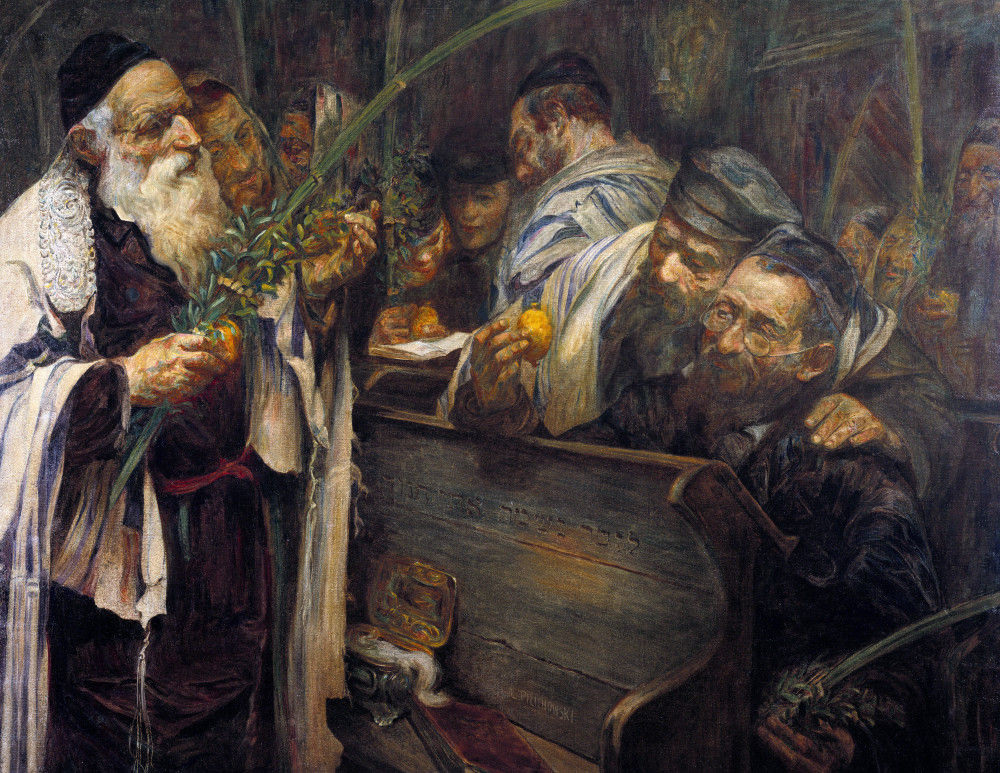Beside sitting or ‘dwelling’ in the Sukkah the other main ‘Mitzvah’ (biblical commandment) of the ‘Feast of Sukkot’ is the well-known Four Species, as mentioned in the Book of Leviticus:
“And you shall take on the first day the fruit of splendid trees, branches of palm trees and boughs of leafy trees and willows of the brook, and you shall rejoice before the LORD your God seven days.” (Leviticus 23:40)
The Four Species or as they called in Hebrew ‘Arba’at’ Ha-Minim’ {ארבעת המינים} are one of the symbols of this holiday and can be seen during this time of the year EVERYWHERE in Israel. The Biblical Hebrew gives a detailed description of the Four Species but does not call them by a specific name and because of that the Rabbinic Hebrew refers to them by the name of the actual fruit or plant.

The Four Species go together with the strong ‘nature’ concept of this holiday and bears, according to the Jewish tradition, a special spiritual and unified meaning as can be found in the following explanation about their Hebrew meaning.
1) ‘The fruit of splendid trees’ – in the original Hebrew ‘Peri Etz Hadar’ {פרי עץ הדר} – is called in Rabbinic Hebrew ‘Etrog’ {אתרוג} and it is the fruit of a citron tree.
2) ‘Branches of palm trees’- in the original Hebrew ‘Kapot Temarim’ {כפות תמרים} – are called in Rabbinic Hebrew ‘Lulav’ {לולב} which is a ripe, green, closed frond from a date palm tree.
3) ‘Boughs of leafy trees’ – in the original Hebrew ‘Anaf Etz Avot’ {ענף עץ עבות} – are called in Rabbinic Hebrew ‘Hadas’ {הדס} which are boughs with leaves from the myrtle tree.
4) ‘Willows of the brook’ – in the original Hebrew ‘Arvei Nachal’ {ערבי נחל} – are called in Rabbinic Hebrew ‘Aravah’ {ערבה} and that refers to branches with leaves from the willow tree.
If you will have a closer look at the Four Species, you will notice quite an interesting thing – even though some have taste and some have smell there are NO two species which are alike!
In other words, the ‘Etrog’ (fruit of a citron tree) has BOTH taste and smell. The ‘Lulav’ (date palm tree) has ONLY taste without the smell. The ‘Hadas’ (leaves from the myrtle tree) has ONLY smell but without taste, and last one, the ‘Aravah’ (leaves from the willow tree) has NEITHER taste nor smell.
According to the ‘Midrash’ {מדרש} (an old Jewish lesson), there is a valuable lesson to be learned – following the next rule: the taste is an allegory for those who study the Torah (theory) and the smell is an allegory for those who possess good deeds (practice).
Or in other words, the ‘Etrog’ has both taste and smell, symbolizing those who have both Torah and good deeds. The ‘Lulav’ has taste but no smell, symbolizing those who study the Torah but do not possess good deeds. The ‘Hadas’ has a smell but no taste, symbolizing those who possess good deeds but do not study the Torah. And the ‘Aravah’ has neither taste nor smell, symbolizing those who lack both Torah and good deeds.
The commandment of the ‘Four Species’ is talking about binding ALL of them together as symbolism for unity and a deeper understanding that there is a role for everyone!
